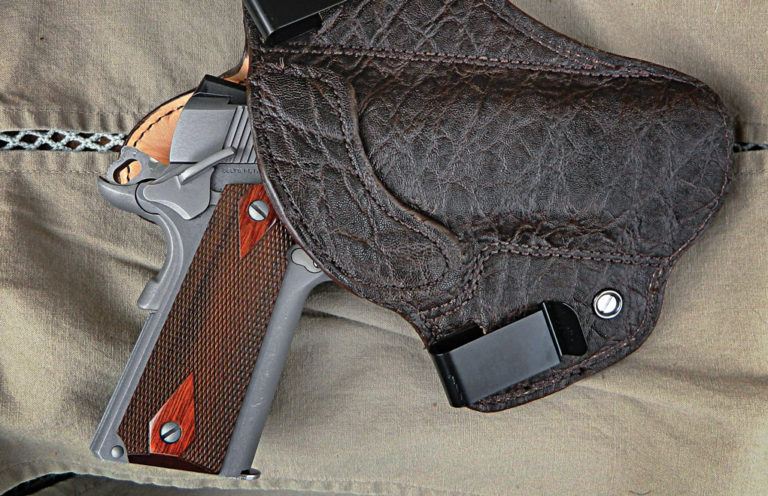
Many are wary of carrying their pistols in Condition One — cocked and locked — but is that fear based in reality or merely perception?
The conditions of readiness for a single-action, semi-auto pistol:
- Condition One: Round in chamber, hammer cocked, safety on.
- Condition Two: Round in chamber, hammer down.
- Condition Three: Empty chamber, hammer down.
While at a media event in Arizona late last year, I was asked about the difference in perceptions about various handguns and their conditions of readiness. As we were close to Gunsite Academy, home of the Modern Technique of the Pistol, it was common to see various makes of 1911-pattern pistols cocked and holstered.
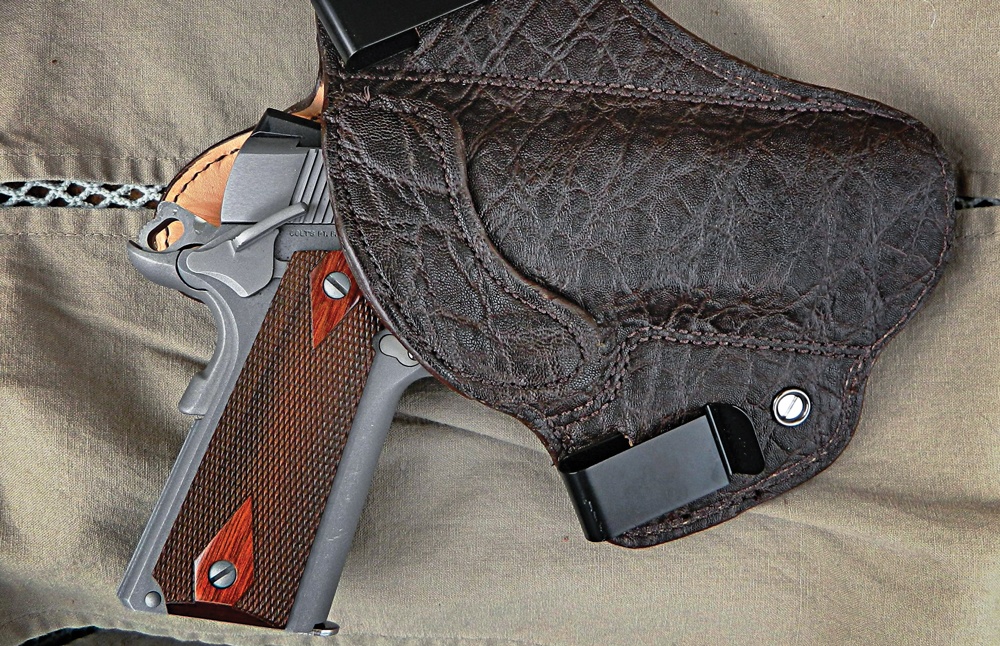
I remembered back when I first became a policeman in the late 1970s. Jeff Cooper had already determined that a part of the Modern Technique of the Pistol was the “heavy-duty self-loading pistol” — at that time, it was the Colt Government Model (or Commander) in .45 ACP, carried in “Condition One” — chamber loaded over a full magazine, hammer cocked and thumb safety on.
Visuals Anxiety
People would see my Colt National Match in the Safariland high ride duty holster and nervously tell me, “Your pistol is cocked.”
“I’d hope so,” was my response.
As time went on, we had one officer carrying a Colt Series 70 Government in his Don Hume Jordan River Holster, thumb-break strap, in Condition Two — hammer down on a loaded chamber with a full magazine. He had no ambidextrous safety lever and elected to carry that gun anyway.
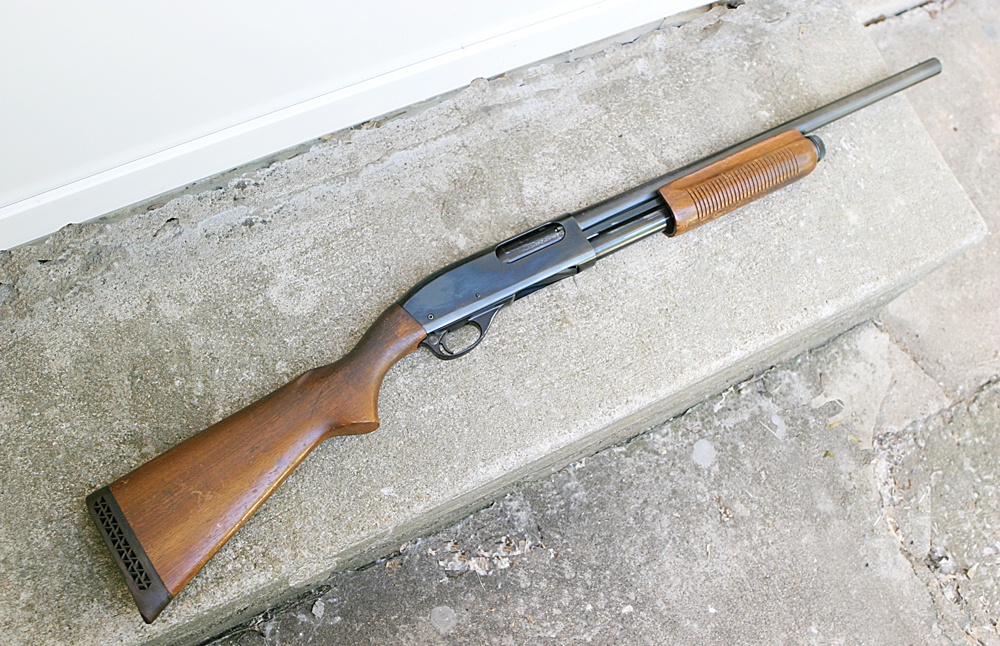
Our sergeant carried a Gold Cup; there was a smattering of other Government Models and a Browning P-35, all of which were carried in Condition One. To say it made the uninitiated, unready and incapable nervous is an understatement.
One of those worthies, a good guy who just didn’t get the deal, came into dispatch one night with his Smith & Wesson Model 13 .357 Magnum cocked in the Jordan River Holster, the over-the-hammer strap stretched between the hammer nose and the frame. Attempts to explain the problems inherent with such a relationship just led to the observation that semi-auto pistols were being carried that way.
Conditions Of Readiness
Of course, it was Jeff Cooper, founder of the Modern Technique of the Pistol, who devised the “conditions.” Condition One, designed around the “heavy duty self-loading pistol” — the single-action semi-auto of the day, is “cocked and locked.” The chamber is loaded from a magazine and a full magazine seated into the pistol. The safety is “on,” locking the sear and the slide. On the presentation, the gun is drawn and, as it levels toward the threat, the safety is pressed “off.”
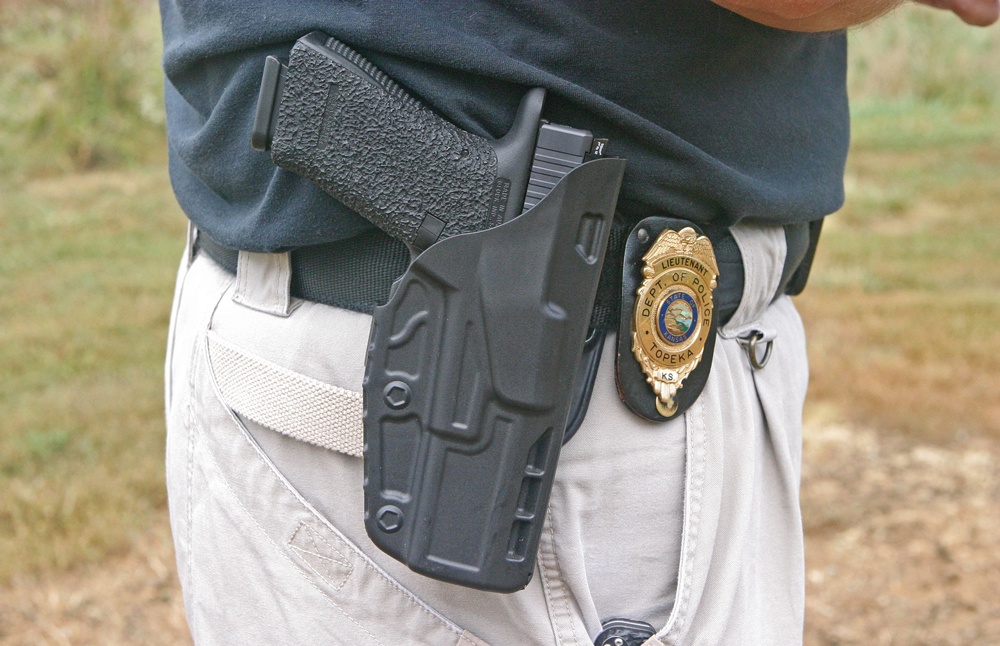
After shooting, the safety is only applied after you “look and assess” ensuring you don’t need to shoot anymore. The thumb rides the safety while firing, but placed under the safety as the gun is replaced into the holster.
Condition Two is a loaded pistol with the hammer down on a loaded chamber — a risky thing, lowering the hammer on a single-action pistol. There’s no upside to doing so. You have to cock the hammer on the draw, something that’s prone to be fumbled.
Condition Three is “half loaded.” There’s an empty chamber over a loaded magazine — so-called Israeli Carry. It’s simply ignorant to carry a self-defense pistol in this way. If you really need a gun, the time isn’t there to load the pistol. Worse, after firing, you’ll want to get the gun out of your hands before responding police arrive.
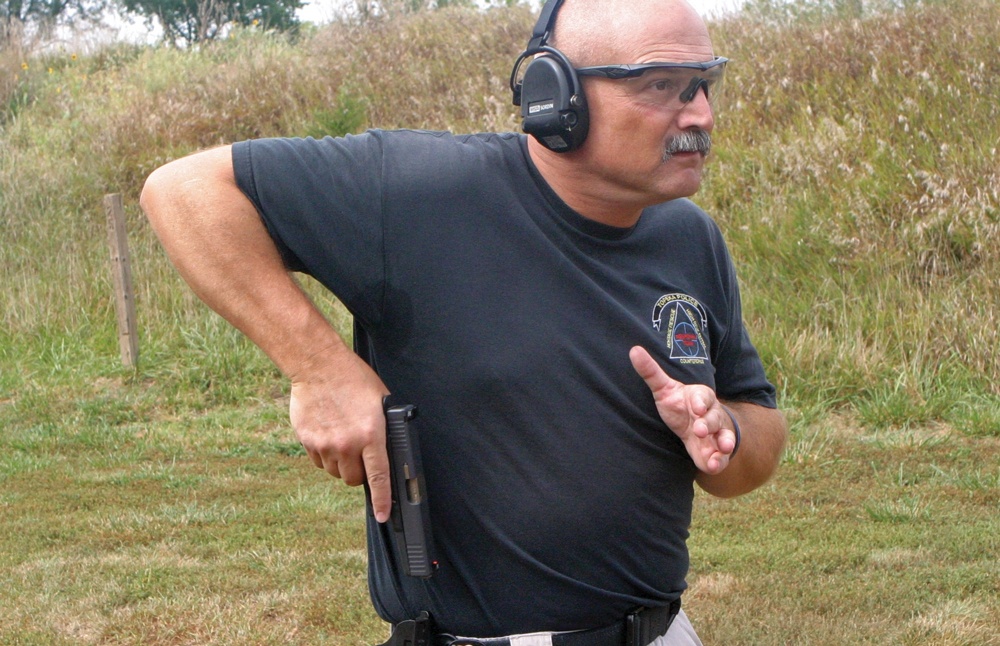
Are you going to fumble around and unload the chamber every time you return the gun to the holster? At any old cold, rainy night in a windy parking lot — after someone tried to kill you and you had to shoot?
The most common service pistol of that time — and one of the most commonly made sidearms of the current era — is the 1911. If you have one to carry for defense purposes, you carry in Condition One.
And, if someone sees it, you’ll hear the same thing. “Hey, mister. Your pistol’s cocked.”
If It Can’t Be Seen, It’s Okay
The truth is that High Standard pump shotguns, Ithaca Model 37s, Remington 870s and old Winchester Model 12s, were routinely cocked and seldom was a word heard about those. Since the demise of the Winchester Model 1897 — with its exposed hammer — “out of sight, out of mind” was order of the day.
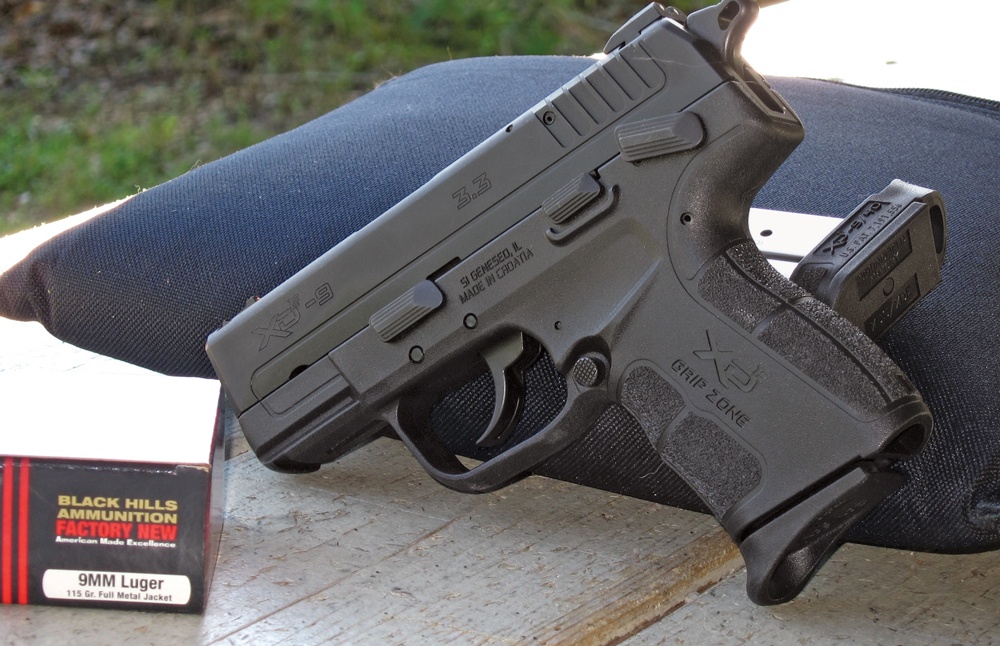
For all those terrified at Condition One semi-autos, a percentage carried hunting shotguns afield for upland game and waterfowl — every one with the hidden hammers cocked — and never considered the issue.
Now we have the modern striker-fired pistol, a gun I consider a real innovation. Made possible by modern techniques of manufacture, they tend to be reliable, easily maintained and have ease-of-use as a feature contributing to ease of training. To say that they’re not cocked and are double-action rivals the current mainstream silliness about gender identity.
If we call them “double-action,” they’re magically safer than the Condition One 1911-pattern pistol.
That is silly.
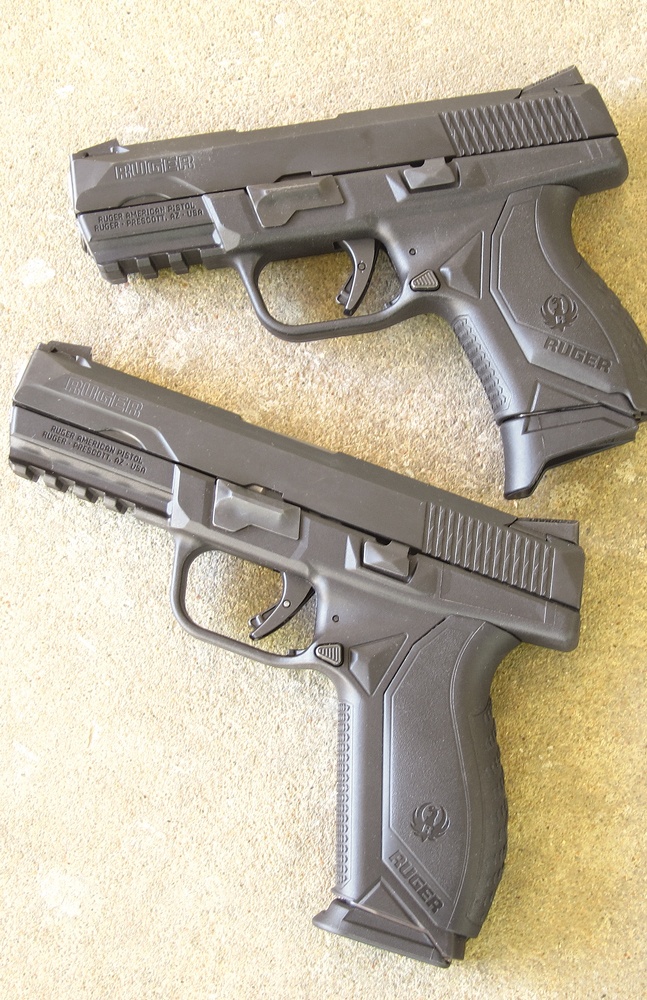
I realize that the initiator of this manufacturing trend has a pistol that won’t fire until the trigger bar pushes the striker back just that extra bit to make release and ignition possible. To say that’s the same as a trigger bar pushing a hammer from rest back past the full-cock notch, allowing it to slip, slam forward and light the primer — no, I’m not buying that.
It doesn’t take as much effort, nor distance, and the springs aren’t at rest in the modern striker-fired pistol. But people can’t see a cocked hammer, so it’s okay.
Testing What’s ‘Really Safe’
The problem is that some people fear the striker-fired wonders of the current era and decide on another alternative: just carry the gun half-loaded — Condition Three. These worthies, many with their recently acquired permits to carry concealed weapons and with the education of Hollywood and good ol’ Uncle Bob who “shotguns his whole life,” carry their gun with a fully loaded magazine under an empty chamber.
That’s not a good plan. If you’re relying on that pistol as a component of your defense plan, it’s going to predictably let you down through no fault of its own.
Again, consider the time: People with considerable experience in the fields of lethal violence calculate you might have up to 3 seconds before you start taking gunfire or become the recipient of a contact weapon’s assault — that’s on the long side. It doesn’t take a timer, though shot timer applications are available for smartphones. It’s long enough to have someone time you with a stopwatch.
Using an empty gun with no magazine, draw from concealment on the signal to start and rack the action, ending in a decent trigger press while sights are on a small target. Understanding that the real thing will never be as easy as doing it dry, you’ll find you’re pressed for time.
Now change it up: Have your timer start throwing things at you while you try to draw and make a dry snap in a safe direction. The key is that if the thrown item hits you, consider it the equivalent of a gunshot wound. You’ll quickly figure out that just drawing to a single accurate hit isn’t as easy as people on YouTube make it look — even if you don’t have to load the gun during the draw.
I understand. Some people are nervous with striker guns and will foolishly carry them chamber empty. This isn’t a solution but another kind of problem. If you can’t internalize the fact that you’re carrying a loaded gun, perhaps you shouldn’t carry a gun at all.
Mechanical Safety
How can a cocked 1911-format pistol be safely carried? What if that hammer just flies forward?
Well, if the gun is unmodified and in good repair, no.
When you apply the safety, a part of it rotates into a position blocking the base of the sear. This prevents the sear from releasing the hammer. On pre- or non-Series 80 guns, the sear would be captured by the half-cock notch if the sear hook on the hammer were to break. With the Series 80 firing pin plunger, the firing pin would be held in place, unless the trigger were pressed, likewise preventing an accidental discharge. The stud that locks the sear will also not allow the hammer to fall if the safety is engaged.
What keeps the Glock from spontaneously firing while in the holster? The striker still needs to attain some rearward travel against spring pressure before it can travel forward — which is likewise prevented unless the trigger is pressed.
As to long guns, they traditionally don’t have “drop safe” features, aren’t carried in holsters that cover triggers, often have only cross-bolt safeties that prevent movement of the trigger but not the hammer off the sear nor the firing pin block. See? That revered fowling piece you take in search of upland game can be very touchy.
The difference is that we carry (or should carry) handguns daily, all the time, in close proximity. Please, no “truck guns” or off-body carry — except in extreme and rare circumstances.
Editor's Notes: This article originally appeared in the Concealed Carry issue of Gun Digest the Magazine.

Next Step: Get your FREE Printable Target Pack
Enhance your shooting precision with our 62 MOA Targets, perfect for rifles and handguns. Crafted in collaboration with Storm Tactical for accuracy and versatility.
Subscribe to the Gun Digest email newsletter and get your downloadable target pack sent straight to your inbox. Stay updated with the latest firearms info in the industry.

![Best Concealed Carry Guns In 2025 [Field Tested] Wilson Combat EDC X9S 1](https://gundigest.com/wp-content/uploads/Wilson-Combat-EDC-X9S-1-324x160.jpg)


![Best 9mm Carbine: Affordable PCCs [Tested] Ruger Carbine Shooting](https://gundigest.com/wp-content/uploads/Ruger-Carbine-Shooting-100x70.jpg)
![Best AR-15: Top Options Available Today [Field Tested] Harrington and Richardson PSA XM177E2 feature](https://gundigest.com/wp-content/uploads/Harrington-and-Richardson-PSA-XM177E2-feature-100x70.jpg)

Rich Grassi’s article was excellent. I cannot agree more. There are too many do-gooders who are so preoccupied with safety that their advice will do much more harm than good. Like the advice I read about recently, which suggested that it was much safer to place your loaded handgun across the bedroom, rather than near your bed. That way, the logic went, you would be sure to be fully awake by the time you reached your handgun; otherwise, you might end up shooting your partner in a dream, or dazed, state. I don’t believe there is even a single case where a soldier in combat, where they all sleep while cradling their rifle, shot his tent mate or foxhole buddy because he wakened in a dazed or half-awake state. If an intruder gains access to your house and you awaken when he breaks down your bedroom door, exactly how do you intend to get to your handgun which was placed “way over there?” Do you plan to call a “time out?” The same advice applied to gun safes. Just how much time do all these safety-minded people think they have when a self defense weapon is needed? I would guess that the goal of a burglar, intruder, invader, etc., is to get to you as fast as possible, before you have a chance to do anything or go anywhere; especially across your room or to your gun safe. A round in the chamber and the hammer back, or slide racked, with a full magazine, is the only way to go. The same with concealed carry–how much time do you have while you’re loading groceries into your trunk and you’re approached by a thief who’s intending to knock you down and rob you? That is not the time to start racking the slide, because the robber will end up shooting you with your own handgun, and then keeping it as a souvenir.